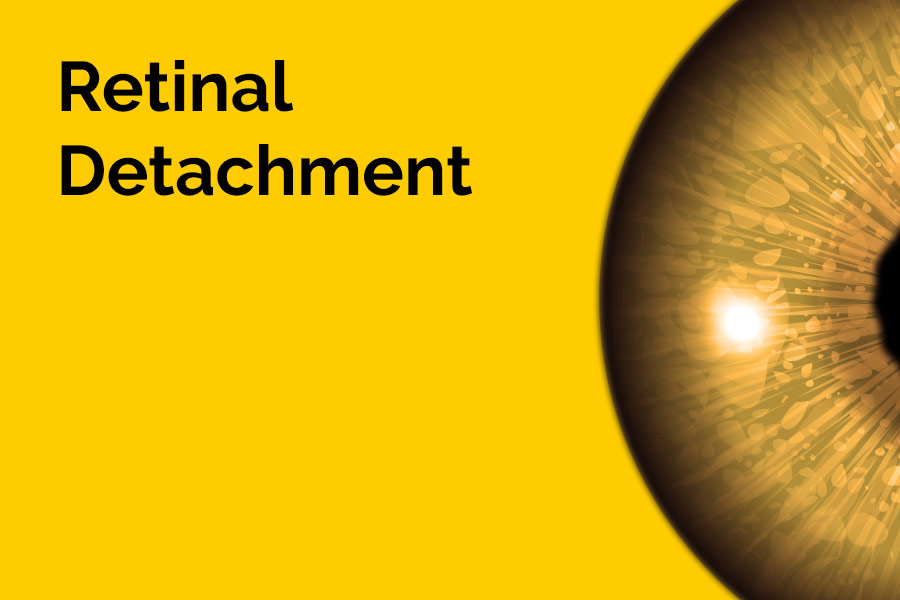Retinal Detachment
The retina is the thin layer of nerve cells that line the inside of the eye. Retinal detachment occurs when the retina has one or more holes in them, allowing fluid to pass underneath of them. This fluid causes the retina to separate from the supporting tissue underneath. If retinal detachment is not detected or treated quickly it can lead to permanent blindness in the affected eye.
Symptoms
Retinal detachment is painless however warning signs generally begin to appear before it happens.
You may begin to see tiny specks that drift through your field of vision, known as floaters. You may experience blurred vision and gradually reduced sight in your peripheral vision. Flashes of light may be seen in one or both eyes.
If you experience any of the symptoms above please seek medical assistance immediately. Retinal detachment is a medical emergency and if early treatment is not received you can risk permanently losing your sight.
Diagnosis, Screening and Tests
The following tests may be used to diagnose a retinal detachment:
- Retinal examination – The doctor may use an instrument with a bright light and a special lens (ophthalmoscope) to examine the back of your eye, including the retina. The ophthalmoscope provides a highly detailed view, allowing the doctor to see any retinal holes, tears or detachments.
- Ultrasound imaging – Your doctor may use this test if bleeding has occurred in the eye, making it difficult to see your retina.
Even if you only show symptoms in one eye, your doctor will exam both eyes. If a tear is not identified at this visit, your doctor may ask you to return within a few weeks to confirm that your eye has not developed a delayed tear as a result of the same vitreous separation. If you experience any new symptoms it is vital that you return to your doctor immediately.
Treatments
If retinal detachment is left untreated it will lead to loss of vision. In 85% of cases, only one operation is required to reattach the retina.
Surgery for retinal detachment may be carried out under general or local anaesthetic. No food or drink must be consumed in the six hours leading up to the operation.
Eye drops will be administered prior to the operation to widen the pupil.
Prevention
Unfortunately, you cannot prevent most cases of retinal detachment. Having routine eye inspections is important so that your eye doctor can look for signs that you might be more likely to suffer from a retinal detachment.
Some eye injuries can damage the retina and cause detachment. It is possible to reduce your risk of these types of injuries if you:
- Wear safety glasses when doing any activity that may result in small objects flying into your eye.
- Wear special sports glasses or goggles during any sport in which you may receive a blow to the eye
- Use appropriate safety measures when using and handling fireworks or firearms.
Having diabetes puts you at a higher risk of developing diabetic retinopathy, an eye disease that can lead to tractional retinal detachment. If you have diabetes, you can help to prevent and control eye problems by having regular eye exams and by keeping your blood sugar levels within a target range.
Treating a retinal tear can often prevent retinal detachment, but not all tears require treatment. The decision to treat a tear depends on whether the tear is likely to progress to a detachment.
